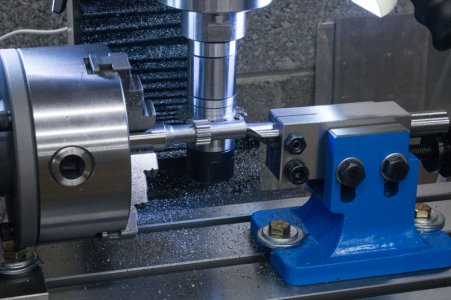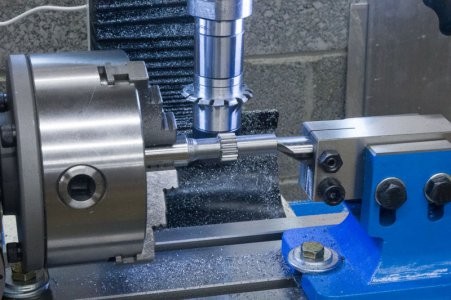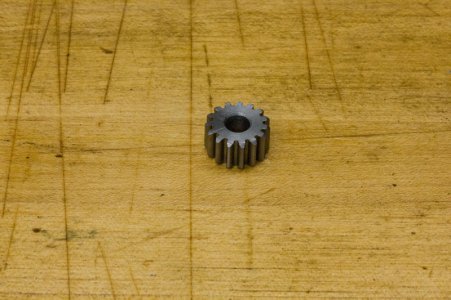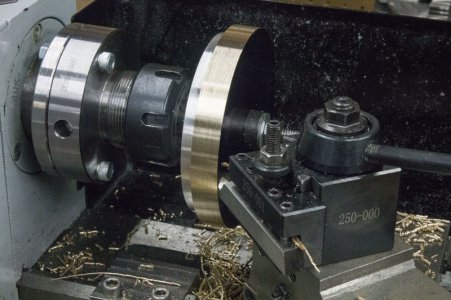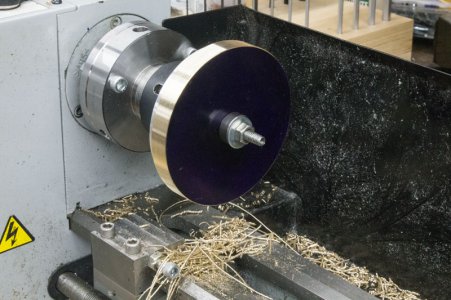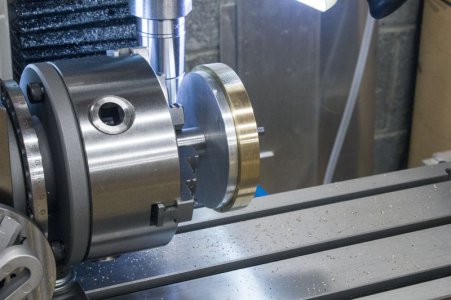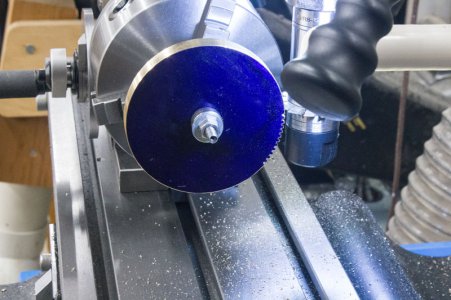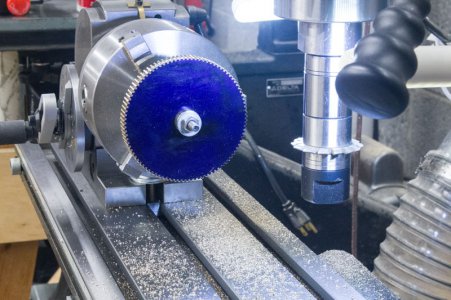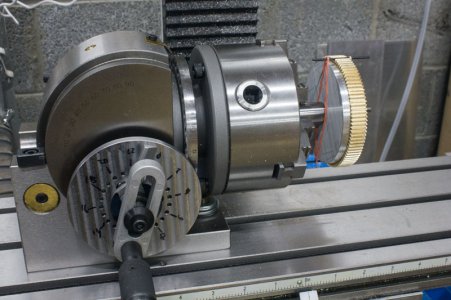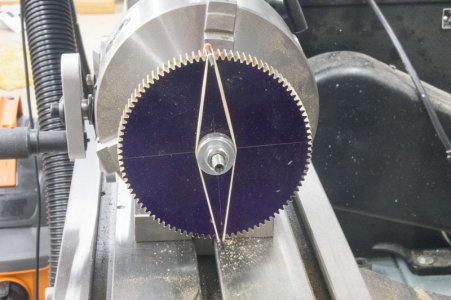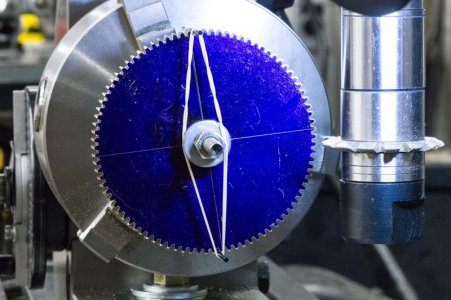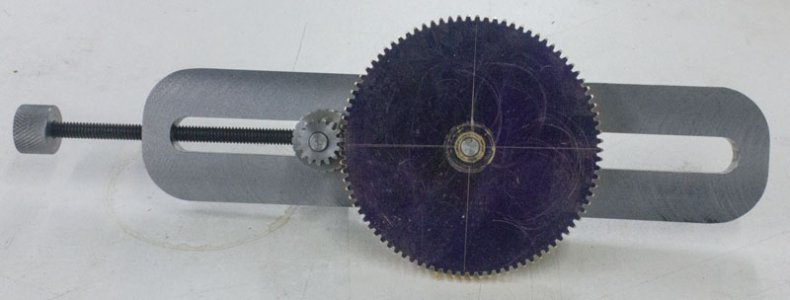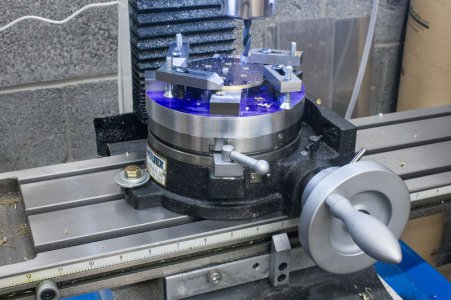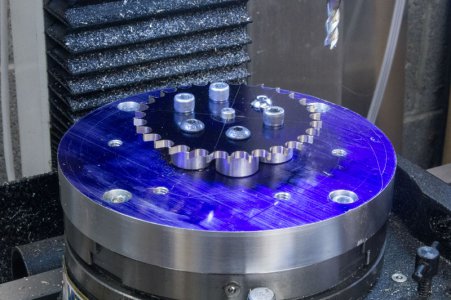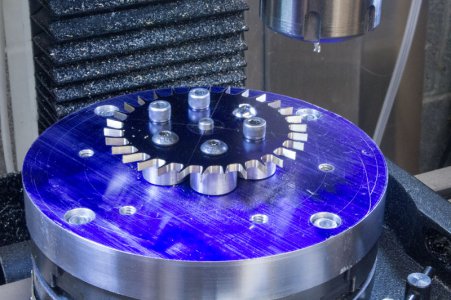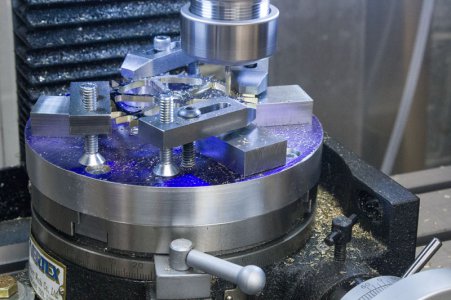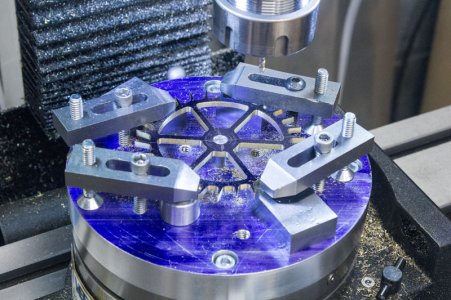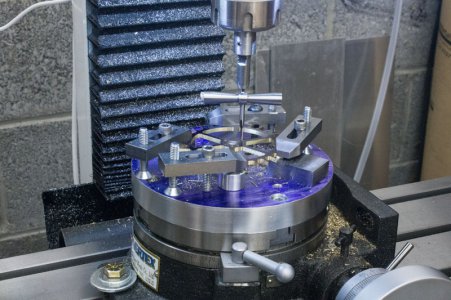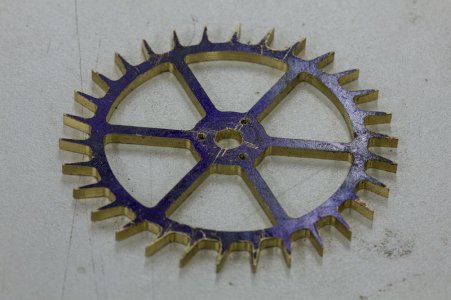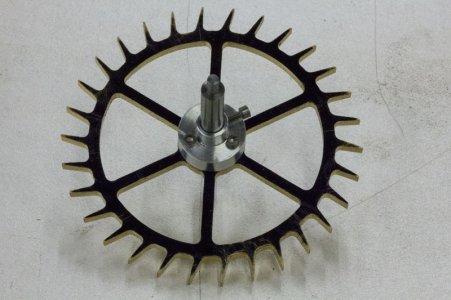I don't have any thoughts on what the thickness ought to be, but I think the only time I've ever seen wheels as thick as 1/4" was on a tower clock. Those might have been cast iron, however. 
Pinions are usually cut from pinion stock and are much longer than they need to be just to allow wheels to find their own alignment. That simplifies construction quite a bit, because the shoulders on arbor pins don't have to be so precise.
Next time I'm in the shop (this weekend), I'll look to see how thick are the wheels on the tall-case movement I'm working on at present. I'm thinking maybe 2mm, but that's guessing.
Rick "except for barrel-wheel threads, which carry more load on each tooth and are maybe twice as thick as wheels in the going train" Denney
Pinions are usually cut from pinion stock and are much longer than they need to be just to allow wheels to find their own alignment. That simplifies construction quite a bit, because the shoulders on arbor pins don't have to be so precise.
Next time I'm in the shop (this weekend), I'll look to see how thick are the wheels on the tall-case movement I'm working on at present. I'm thinking maybe 2mm, but that's guessing.
Rick "except for barrel-wheel threads, which carry more load on each tooth and are maybe twice as thick as wheels in the going train" Denney


